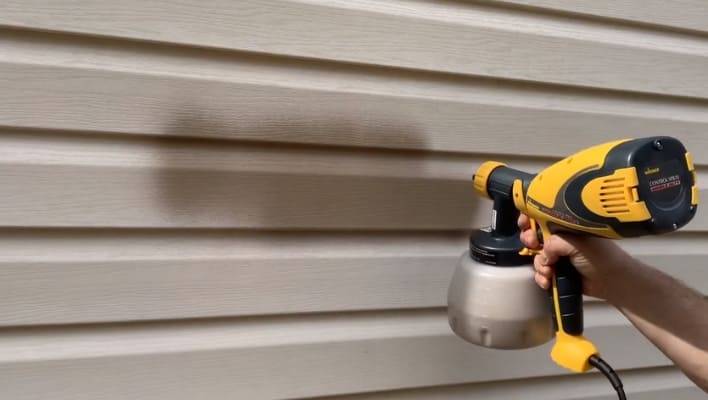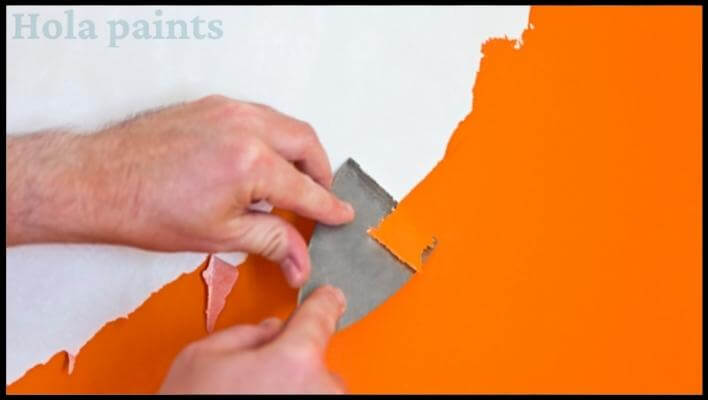When it’s time to repaint your car or fix its surface, choosing the correct sandpaper grit becomes essential to avoid paint or surface damage. With different sanding applications in the painting industry, understanding the automotive sandpaper grit chart is important. Whether you’re considering a DIY project or seeking professional help, knowing what grit sandpaper to scuff paint to repaint will ensure a smooth and flawless finish to your vehicle’s paint job.
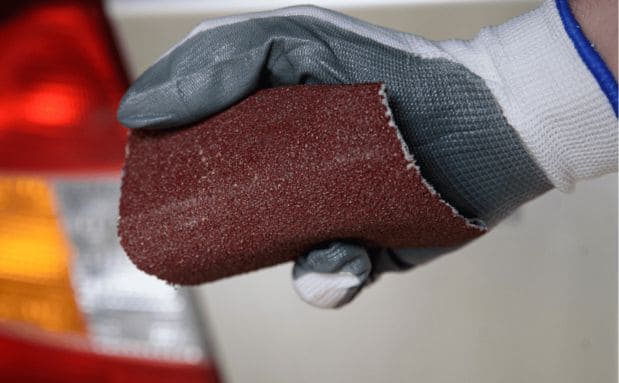
Table of Contents
- Understanding Grit Sandpaper For Car Paint
- What Grit Sandpaper To Scuff Paint for automotive sanding- Quick Summary
- Selecting the Right Sand Paper Grit for car paint
- Assessing the Existing Paint:
- auto body sandpaper grit chart
- Final Words On sandpaper grit for car paint
- FAQS
- What grit sandpaper to use when painting a car?
- What grit to scuff before paint?
- What grade of sandpaper for rubbing down paintwork?
- What grit sandpaper for scuff and shoot?
- What grit sandpaper for primer before paint car?
- What grit sandpaper for wet sanding base coat?
- What grit sandpaper to scuff paint to repaint wood?
- Martina Hitchcock
Understanding Grit Sandpaper For Car Paint
Grit in sandpaper refers to the number of abrasive particles per square inch. The grit number indicates the coarseness or fineness of the sandpaper. Higher grit numbers represent finer particles, resulting in smoother sandpaper suitable for polished finishes and delicate tasks.
Conversely, lower grit numbers signify coarser particles, making sandpaper more aggressive at removing material and preparing rough surfaces. It is important to select the appropriate grit size based on the specific task to achieve optimal results in automotive painting and other applications.
What Grit Sandpaper To Scuff Paint for automotive sanding- Quick Summary
Automotive painters often use a range of car sandpaper grit sizes to achieve smooth and professional finishes. Coarse grits like 40 to 80 are ideal for heavy paint or rust removal.
Medium grits like 120 to 180 are recommended for surface leveling and paint preparation. Fine grits such as 220 to 320 are suitable for smoothing out imperfections.
Very fine grits like 400 to 3,000 are used for final finishing and polishing. Understanding the right grit size for each stage of the painting process is essential to achieve high-quality results and ensure a flawless automotive paint job.
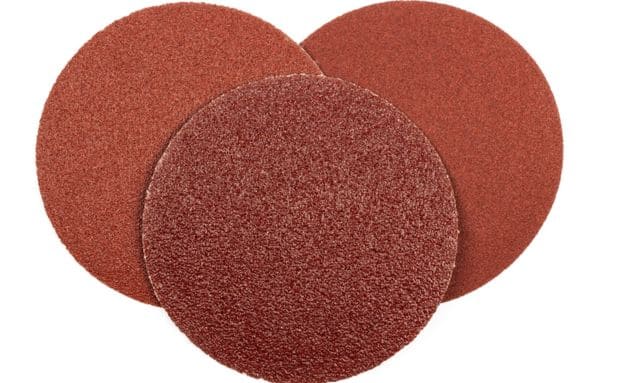
Selecting the Right Sand Paper Grit for car paint
Assessing the Existing Paint:
Before selecting a grit sandpaper, you must evaluate the paint condition. If the paint is in good condition with no flaking, bubbling, or peeling, and you plan to apply the same type of paint, a light scuffing with finer grit sandpaper might be sufficient. However, if the paint is damaged or you intend to switch to a different type of paint, you’ll need a more thorough sanding with coarser grit.
Follow the step-by-step method for sanding a car in detail.
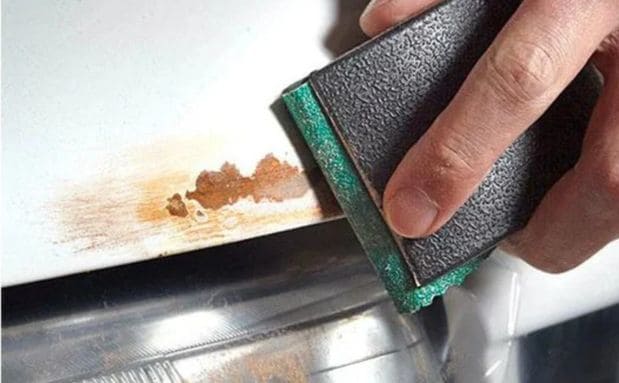
auto body sandpaper grit chart
By understanding the importance of grit sizing and its specific applications, you can achieve the desired results in your repainting car project. Remember to start with coarser grits for substantial material removal and gradually work your way up to finer grits. This will enable you to achieve a refined surface ready for an impeccable paint job. Properly scuffing the paint with the right grit sandpaper will ensure a successful and professional-looking repaint.
| what grit sandpaper for car paint | Used for |
| 40 to 80 grit | 40 to 80 grit sandpaper is used for rough sanding tasks such as shaping body filler and preparing surfaces before bodywork. It leaves visible marks and is not suitable for fine scratches on clear coats. |
| 120 to 180 grit | 120 to 180 grit sandpaper is specifically designed for delicate sanding. It proves highly effective at smoothing out scratches, remove light rust gently blending body filler edges, and eliminating imperfections like spot filler. Thanks to its fine texture, this sandpaper leaves minimal marks. It is ideal for refining the filler layer. |
| 320 to 400 grit | 320 to 400 grit sandpaper is used for fine finishing and leveling filler surfaces before applying primer. It helps eliminate tiny imperfections that could become more prominent once primer and base-coat are added, ensuring a smooth and flawless paint job. |
| 600 to 800 grit | In the automotive refinishing process, 600 to 800 grit sandpaper is ideal for eliminating imperfections in the primer layer. This sanding technique creates a polished and even surface, ensuring an impeccable paint finish. It’s best to begin with 600 grit and gradually move up to 800 grit for the most optimal outcome. |
| 1000 to 1200 | 1000 to 1200 grit sandpaper is used for removing imperfections from the colored base coat, with the wet sanding technique recommended for best results. It helps achieve a smooth and flawless finish on the base coat before applying a clear coat or final finishing. |
| 1500 to 2000 grit | 1500 to 2000 grit sandpaper achieves a smooth and flawless finish. Whether it is preparing the surface before applying the clear coat or refining it afterwards, this sandpaper proves invaluable. Its high grit count smooths out surface imperfections and scratches, ensuring an even and polished appearance. With its meticulous approach, this sandpaper is perfect for a pristine and professional result. |
Learn more about micro and macro sandpaper grit for painting projects.
Final Words On sandpaper grit for car paint
In conclusion, selecting the appropriate sandpaper grit is important when scuffing paint for repaint. Coarse grits like 120 to 180 are suitable for more aggressive tasks, such as flattening scratches and removing blemishes in the initial stages. On the other hand, finer grits like 1500 to 2000 are ideal for a smooth and flawless finish. This is especially important before and after clear coat application.
FAQS
What grit sandpaper to use when painting a car?
To start the sanding process, start with 180-grit sandpaper for dry sanding. This step is crucial for eliminating rust or addressing surface damage. Once you have completed this stage, progress to higher grits such as 320-400. This will help you smooth out any rough areas and remove old paint, preparing the surface for further refinement. For a finer finish before applying primer and paint, advance to higher grits, like 600-800. This final fine sanding step ensures a smooth and pristine surface, ready to receive primer and paint for a professional and lasting result.
What grit to scuff before paint?
The grit to scuff before painting depends on the surface you want to paint. Use 120-150 grit for wood, 80-120 grit for metal, 220-320 grit for plastic, and 120-150 grit for drywall. For previously painted surfaces, 220 grit is usually sufficient. It doesn’t aim to remove material but provides better adhesion to paint or stain.
What grade of sandpaper for rubbing down paintwork?
For rubbing down paintwork, use 220 to 400 grit sandpaper. Coarse grits (220-320) for imperfections or removing paint, and finer grits (320-400) for smoother surfaces or fresh paint. Be cautious to avoid damaging the underlying surface. Clean thoroughly before painting.
What grit sandpaper for scuff and shoot?
Scuff and shoot is a common process used to refresh or touch up paint without fully refinishing the entire surface. You can use 320 to 400 grit sandpaper to scuff the surface lightly to create a better bond for new paint (or a clear coat). Ensure it’s clean and free of debris before applying a new coat.
Also, scuffing shiny paint finishes can be achieved using 500 to 600-grit fine sandpaper. These methods prepare the surface for fresh coat application from your paint system.
What grit sandpaper for primer before paint car?
The recommended grit range for sanding primer before painting a car is as follows:
- 600 to 800 Grit: Use this range to sand out surface imperfections in the primer before applying the paint. Begin with the lower grit (600) and gradually work your way up to 800 for a smoother finish.
- 1000 to 1200 Grit: For the purpose of removing imperfections in the base coat, a grit range of 1000 to 1200 is recommended, as it effectively addresses the job at hand.
Remember to work methodically and clean the surface thoroughly after each sanding stage to ensure a successful paint application.
What grit sandpaper for wet sanding base coat?
You can use 1000-1500 grit sandpaper for wet sanding base coat as per my experience. This fine grit smooths the surface, removes imperfections, and prepares the base coat for clear coating, resulting in a glossy and flawless finish.
What grit sandpaper to scuff paint to repaint wood?
Use 120-150 grit sandpaper to scuff the old paint before repainting wood. This ensures proper adhesion and smooth surface for the new paint.

Martina Hitchcock
Martina Hitchcock is a versatile author with expertise in different fields. As a paint sprayer expert, she has in-depth knowledge of paint spraying techniques, tools, and equipment. Martina is also an experienced home remodeler who has worked on various projects, including kitchen and bathroom renovations, flooring installations, and room additions. Her knowledge of home improvement and remodeling is extensive, and she enjoys sharing her insights and tips with readers. You can follow her on Facebook.

